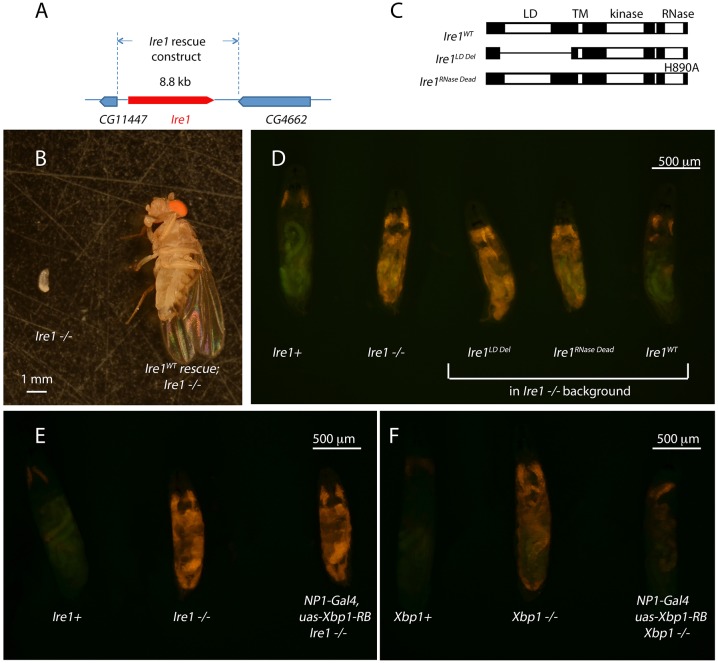Fig. 3.
The roles of specific IRE1 domains and spliced XBP1 in development. (A) A schematic diagram of the Ire1 rescue genomic construct. (B) Ire1−/− larva at its latest stage of survival (left), juxtaposed to an Ire1−/− fly rescued with the wild-type Ire1 genomic transgene. (C) A diagram of wild-type and mutant Ire1 primary structures that were tested for rescue. While the mutations were made in the context of the 8.8 kb genomic rescue transgene, only the changes in the resulting coding sequence are shown here. The mutant constructs are designed to specifically impair misfolded peptide sensing in the ER by the deletion of the luminal domain (Ire1LD Del) and RNase activity (Ire1RNase Dead). The latter has a missense mutation that changes H890 to an alanine residue. (D) The effect of the wild-type and mutant Ire1 transgenes on the 4E-BPintron dsRed signal of the Ire1−/− first-instar larvae. The genotypes are indicated below each larva. (E,F) The effect of expressing Xbp1-RB (spliced Xbp1 isoform) through the NP1-Gal4 driver in the Ire1 (E), or Xbp1 (F) mutant backgrounds. All larvae contain the 4E-BPintron dsRed (red) reporter in the background, and the genotypes are indicated below each larva.

